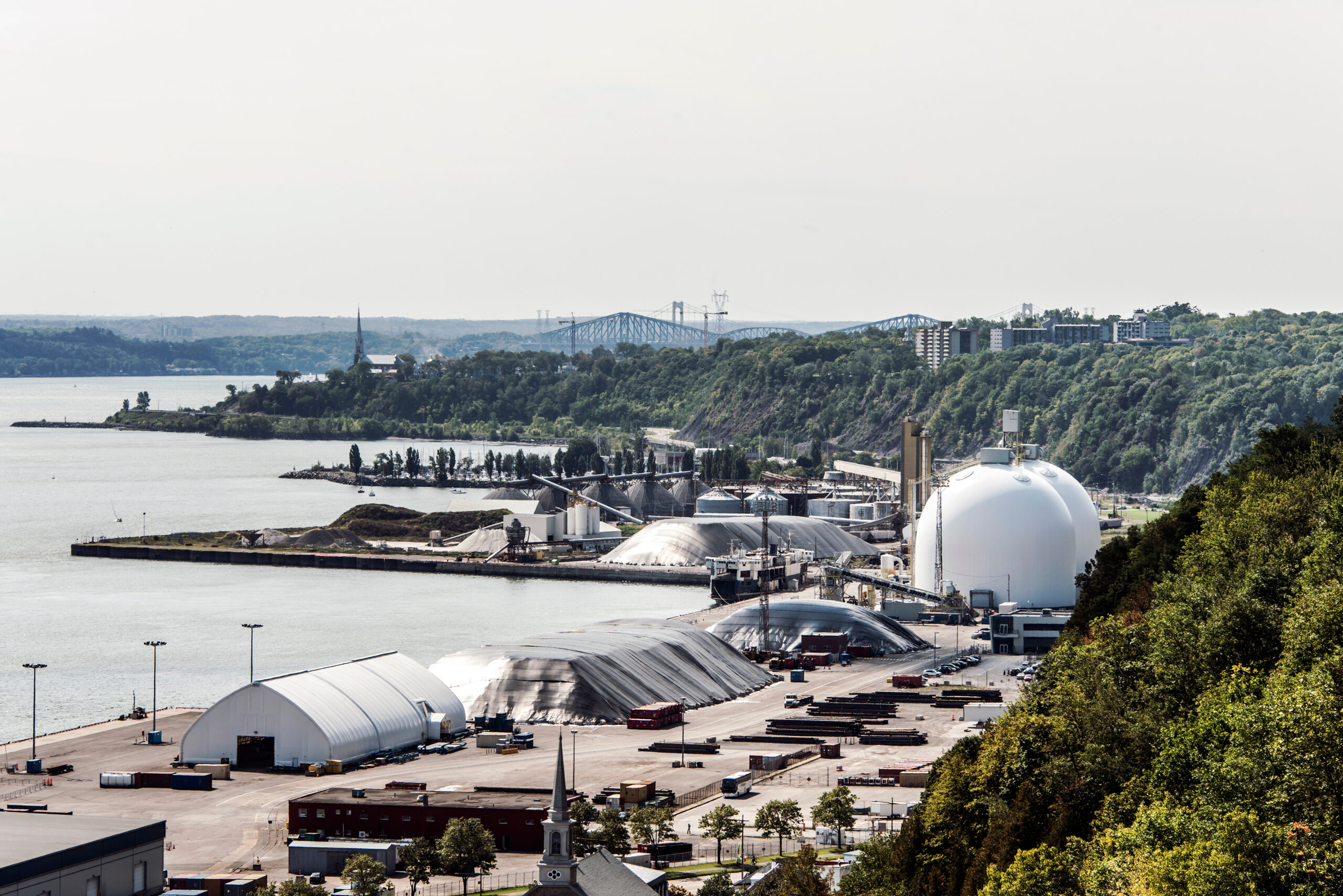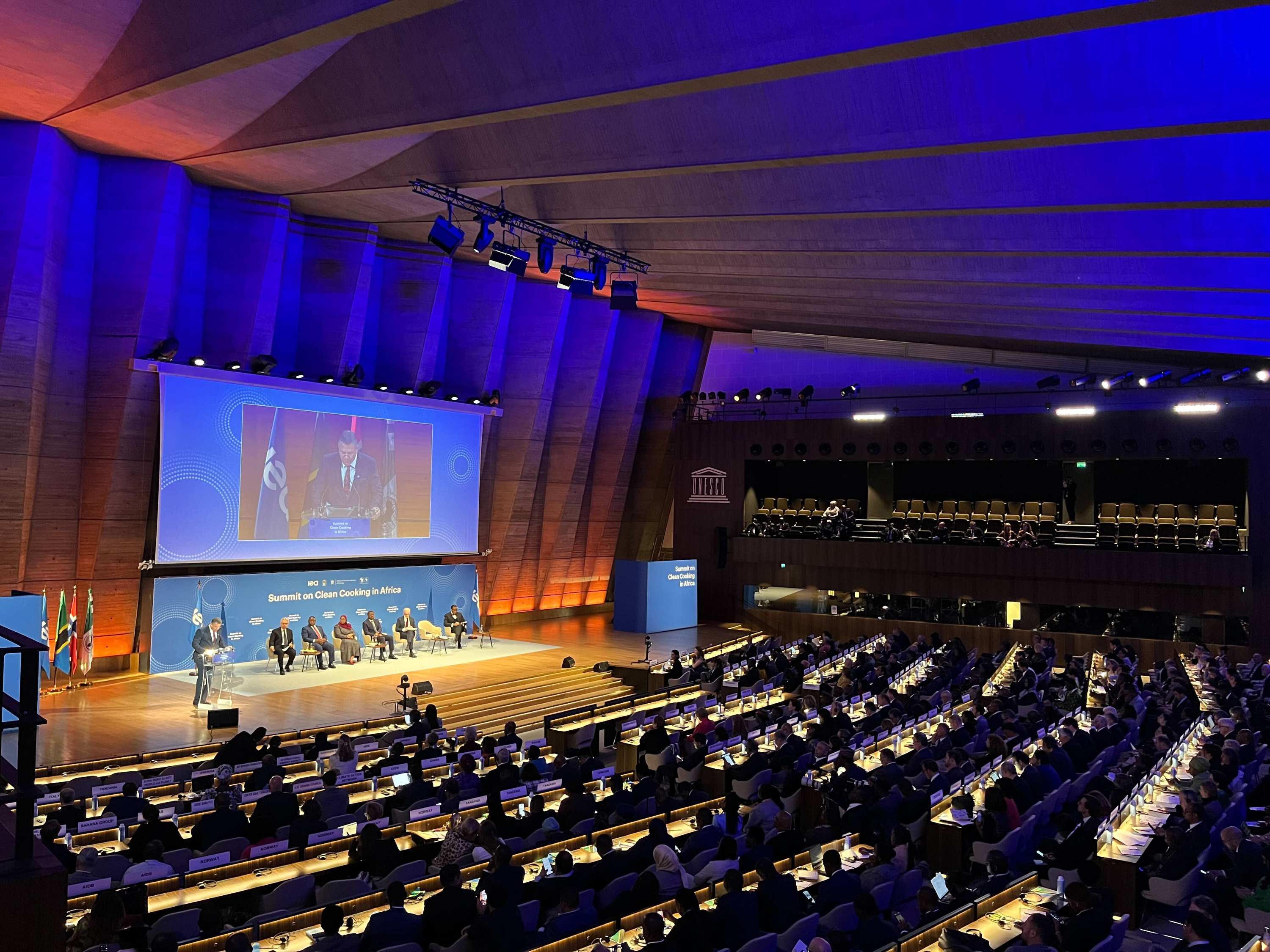Canada prepares emissions cap for oil and gas sector
After repeatedly missing climate targets in recent years, Canada’s oil and gas sector emissions cap could be “groundbreaking.” But the industry is fighting to weaken it.

The Canadian government is expected to soon unveil draft regulations that will cap greenhouse gas emissions from the oil and gas sector, a policy that is shaping up to be pivotal for the country’s attempts to reach its 2030 climate targets.
Last year, the Canadian government proposed a cap on emissions from the oil and gas sector, with the goal of cutting emissions by 31 percent below 2005 levels by 2030. The government offered up two possible mechanisms to get there — a new cap-and-trade system or an enhanced version of its existing carbon pricing on large polluters.
Experts say that the emissions cap could be a major step forward for climate action in Canada, but that the devil will be in the details. In the past two decades, Canada has announced multiple climate targets, only to repeatedly blow past them. The enormous growth of Canada’s oil sands industry is one of the main reasons for that failure. Even as other sectors saw emissions decline, CO2 emissions from oil and gas have climbed steadily, up 87 percent since 1990.
“The reality and the elephant in the room of Canada not meeting its climate targets has been its refusal to address the oil and gas sector’s responsibility,” Caroline Brouillette, executive director of Climate Action Network Canada, told Gas Outlook. “And now we have with this cap on oil and gas emissions a groundbreaking opportunity to break the cycle and make sure we reach our 2030 targets.”
The oil and gas sector is the country’s largest source of emissions, accounting for 28 percent of the total. Transportation is a distant second at 22 percent.
The Canadian government has previously laid out a climate target to reduce overall country-level emissions by 40 percent below 2005 levels by 2030. But to achieve that, big cuts will be needed from oil and gas.
“There’s no way we can meet a 40 percent reduction by 2030 unless we also see significant reductions from the oil and gas sector,” Kathryn Harrison, a professor of political science at the University of British Columbia, told Gas Outlook. “And there’s not that many years left.”
The government is looking at two options. If the emissions cap took the form of a cap-and-trade system, large polluters would need to cut their emissions or purchase allowances for each tonne of CO2 emitted. The number of allowances would decline over time. If, on the other hand, the government chooses to use its existing pollution pricing programme, it would translate into a higher tax paid by polluters, calibrated with an eye on the 2030 emissions reduction goal.
The advantage of the cap-and-trade system is that it would provide more certainty that pollution would decline because there would be a clear sectoral limit, whereas the carbon pricing approach may not achieve the desired cuts. However, the cap-and-trade programme could take longer to stand up, Harrison said. Either way, it will be very difficult because of the staggering growth in the oil and gas sector’s carbon footprint in the last few decades.
“We should have done more. We should have started three decades ago and didn’t. We just kept pretending,” Harrison said. “But now that we are trying to do more, it’s going to be really hard. Canada needs to start pulling up its socks and doing its part, but it’s a greater challenge because of how long we’ve let our emissions go up.”
Oil and gas industry digging in its heels
Canada’s oil and gas industry is working to weaken the policy. Industry lobbyists are working behind the scenes to ask for a more “flexible, non-regulatory approach,” according to The Narwhal. They are also engaging in a PR blitz to present themselves as partners in climate action, as Canada’s National Observer reported.
The industry, along with a constellation of like-minded trade groups and allied political entities, position the oil and gas industry as a partner with the government in achieving Canadian climate targets, says Chris Russill, an associate professor in the school of journalism and communication at Carleton University in Ottawa, Canada.
“They try to represent these companies as climate friendly, and committed to climate action and to the government’s net zero goals,” Russill told Gas Outlook. Russill’s research focuses on climate denial and disinformation. “They’re presenting themselves in this way so that they are inside the conversations as they try to slow down the implementation and ambition of policies, like the oil and gas cap.”
“Once they are inside that conversation, there are a couple of tactics that we see,” he said. “One is they tend to try to represent the energy transition as energy diversification. They want to keep all tools on the table as we live in a volatile and insecure world.”
Gas and LNG in particular have taken on a prominent role in the energy industry’s messaging since the war in Ukraine began in early 2022. More fossil fuel production can guard against geopolitical uncertainty and price volatility, the logic goes.
But the more important tactic, Russill said, is that the Canadian oil and gas industry says that it will eventually achieve net-zero emissions, but that the government’s proposed cap is too stringent and the timeframe too ambitious.
Both tactics — positioning themselves as climate partners, and advocating for looser requirements — go hand-in-hand.
“It is important to understand that they are working together. The industry needs to present this climate-friendly claim to create a positive association with the transition in order to delay the point at which they would be held accountable for their emissions until 2040 or 2050,” Russill said.
The strategy of delay is an effort to “wait out the inconvenient moment, hoping that the social mandate for climate action weakens,” he said. “There could be a new government that is not so ambitious, and the industry could just ride this moment out and hope that a better political context presents itself.”
A February 2023 report from InfluenceMap, a watchdog group, looked at the six largest Canadian oil and gas companies and their efforts at lobbying, PR, and greenwashing campaigns. The analysis found that “despite the Canadian oil and gas sector’s widespread use of net zero commitments and narratives, the industry remains strategically opposed to science-based policy to deliver net zero targets in line with limiting warming to 1.5°C.”
The report found that the industry supports expansion of oil and gas projects and frames those operations as “clean” and integral to climate action, and then simultaneously opposes regulations that would cut emissions. A key example is the government’s proposed emissions cap on the sector, which “received severe pushback” from oil and gas companies when it was introduced, the report found.
Canada’s federal Competition Bureau is investigating claims by the Canadian Gas Association, an industry trade group, for its marketing campaign depicting gas as “clean,” which could amount to “deceptive marketing practices.”
A separate inquiry is looking into potentially misleading net-zero claims by the Pathways Alliance, a group of six oilsands majors, including Suncor Energy, Imperial Oil, Cenovus Energy, ConocoPhillips, Canadian Natural Resources and MEG Energy.
In fact, the Pathways Alliance has emerged as one of the biggest opponents of the emissions cap. The Alliance was established in 2021, and its main objective appears to be to present the oil sands industry as a leader on climate change. The group says “Canada’s oil sands are on a path to reach net-zero emissions from operations.”
The pathway to net zero consists of dramatically scaling up carbon capture and sequestration, a technology with a poor track record around the world and one that has not demonstrated its viability. Even as the industry frames carbon capture as a solution, it also says its investment in the troubled technology depends on the government paying for much of it.
As The Narwhal reported, the Pathways Alliance is seeking to weaken the impact of the emissions cap before it rolls out, asking the government for long lead times, flexibility, and other non-regulatory approaches.
Climate activists say the industry group ultimately wants to make the policy ineffective. “We’ve seen the Pathways Alliance engage in a broad greenwashing campaign across the country to put forward the idea that voluntarily the oil and gas industry would be reducing emissions,” Brouillette said. “I think the reality is that this industry, time after time, has been pushing for delays, pushing for loopholes in regulations so as to make them ineffective.”
Meanwhile, the industry’s net-zero claim, if it were to be achieved, only applies to emissions from extraction and transport. It excludes all the emissions from combustion, most of which happens overseas. More than 80 percent of the total volume of oil and gas extracted in the country is shipped abroad.
“When we talk about our oil and gas emissions, we’re not talking about the downstream combustion that happens in other countries. In fact, we studiously avoid talking about that, I would say,” Harrison said.
The Pathways Alliance did not respond to questions from Gas Outlook.
Even with all of these caveats, the focus on cutting emissions has been too high of a priority, according to one of the Pathway Alliance’s most powerful members. In August, Suncor’s CEO said that it would refocus its efforts on boosting profits and oil sands production, seemingly downgrading its attention to decarbonisation.
“We have a bit of a disproportionate emphasis on the longer-term energy transition,” Suncor CEO Rich Kruger told investors on an earnings call, explaining his plans to focus more heavily on the company’s oil sands operations. “Today, we win by creating value through our large integrated asset base underpinned by oil sands.”
Canada’s Environment Minister Steven Guilbeault was not pleased, stating that Suncor’s move to double down on oil sands reinforced his belief in the need for a cap on the sector’s emissions.
“To see the leader of a great Canadian company say that he is basically disengaging from climate change and sustainability, that he’s going to focus on short-term profit, it’s all the wrong answers,” Guilbeault said in an interview with The Canadian Press. “If I was convinced before that we needed to do regulation, I am even more convinced now.”
Climate urgency
Canada was given a painful reminder of the urgency of the climate crisis this summer. Massive wildfires burned across the country, shrouding huge swathes of the North American continent in smoke for weeks on end. A peer-reviewed paper from earlier this year drew direct links between the increase in extreme wildfire activity in Canada and the carbon pollution from 88 fossil fuel companies.
Joe Vipond is an emergency room physician in Calgary, Alberta and also the past president of the Canadian Association of Physicians for the Environment (CAPE), a group of health experts concerned about environmental issues.
Vipond says he’s seen climate disasters hit the province with increasing frequency and severity. “We’ve had lots of smoke events. Those wildfire smoke events have significant impacts on emergency room visits as well as hospitalizations. We know that during those big events there’s an impact even on mortality in regions that are affected,” Vipond told Gas Outlook.
He sees patients who have to leave home because of climate disasters. “Even as recently as last week I was seeing people from Yellowknife who were having significant physical and mental health impacts from those evacuations,” he said, referring to the mass evacuation of 20,000 people from the city in the Northwest Territories in August because of an out-of-control wildfire.
Vipond welcomed the news that Canada would finally implement a cap on emissions in the oil and gas sector.
“The can has been kicked down the road for decades now, and finally the government has the political will to actually deal with this problem,” he said. “There’s literally no way we can deal with the climate crisis as a country without dealing with our oil and gas emissions. Let’s face it, it’s the combustion of fossil fuels that has caused this problem.”
The government will unveil the programme in the coming weeks. The details will demonstrate how committed the government of Prime Minister Justin Trudeau is in meeting its climate obligations.
In a statement to Gas Outlook, Environment and Climate Change Canada, the federal agency formulating the oil and gas emissions cap, said: “Reducing oil and gas sector emissions is a critical element of meaningful climate action in Canada and elsewhere. Establishing a clear, long term policy signal for the sector will help create the certainty needed to facilitate investment decisions in clean technologies, low-emitting energy assets, and the infrastructure needed to support them.”
The agency did not answer specific questions about the policy from Gas Outlook, but said: “Work continues to advance this measure. While the details of the emissions cap are still to be confirmed, the Government of Canada is committed to cap and cut emissions from the oil and gas sector at the pace and scale needed to achieve 2030 climate targets and net-zero emissions by 2050.”
Possible outcomes range from a meaningful step towards climate action, or something more modest and accommodating for the oil and gas industry.
“The big question is how much flexibility, in what form, and is it credible?” Harrison said, explaining what she will be watching for. The industry will want the ability to rely on carbon offsets, the ability to purchase allowances or credits outside of the oil and gas sector, or even from international carbon credit markets. She said the industry may also want the ability to bank credit over time — that is, a pledge to cut emissions closer to mid-century rather than this decade.
The exact contours of this highly significant climate policy would also have global implications. Canada is the fourth largest oil and gas producer in the world, and it is on track to be the second largest developer of new oil and gas production from 2023 to 2050, according to a new report, which found that Canada could account for 10 percent of all new oil and gas extraction through mid-century.
“This is really a moment of truth for Canadian climate policy and also for the oil and gas industry, because we have been pretending for a very long time that we can prosper through oil and gas exports and meet our domestic climate targets at the same time, and this is the moment where the emissions just from producing that oil and gas hit up against those domestic climate targets,” Harrison said.
“Politicians across Canada have been saying we can have it all,” she said. “This is the moment of truth. Show us how that works.”



